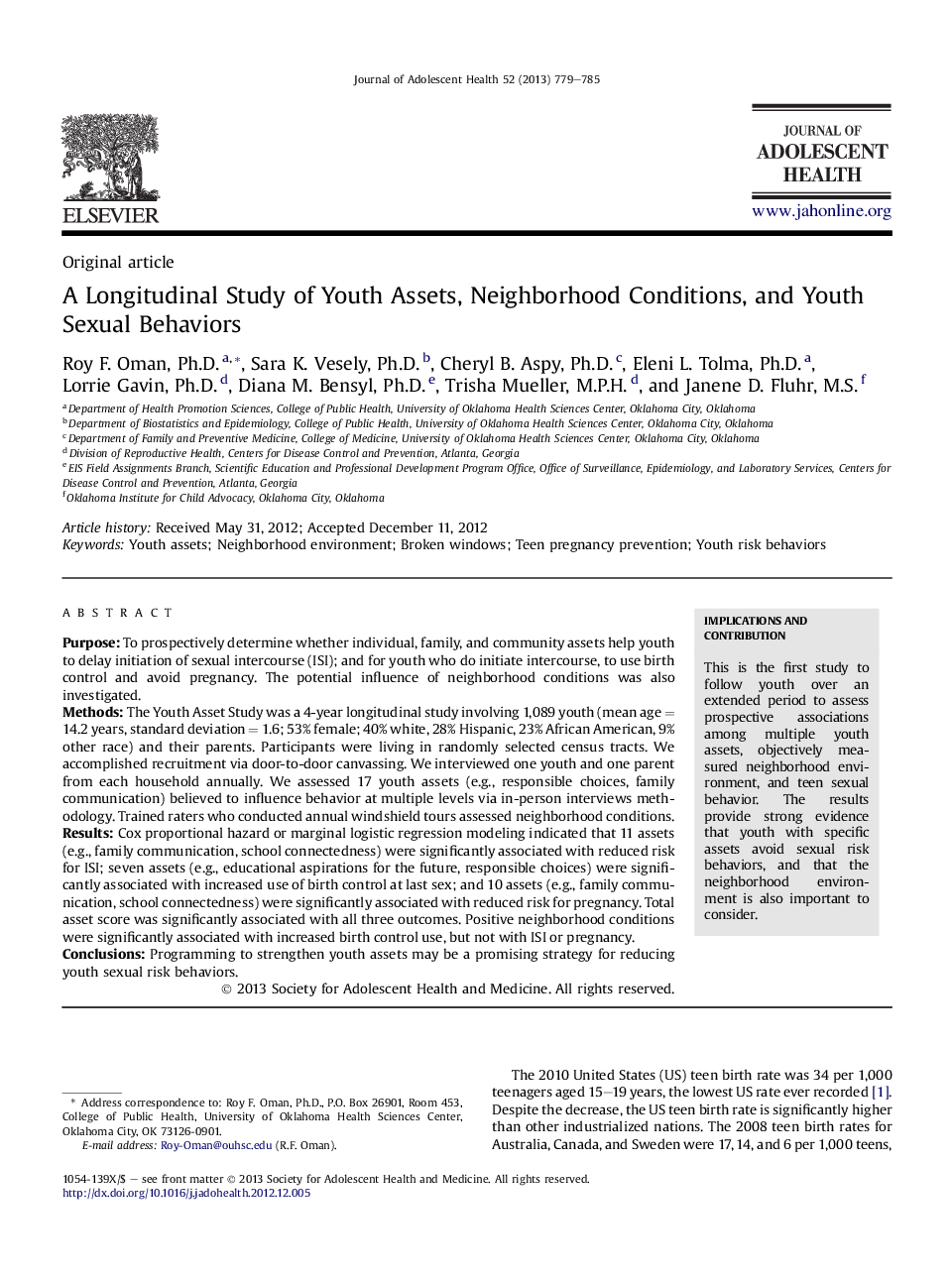| کد مقاله | کد نشریه | سال انتشار | مقاله انگلیسی | نسخه تمام متن |
|---|---|---|---|---|
| 1078237 | 950441 | 2013 | 7 صفحه PDF | دانلود رایگان |

PurposeTo prospectively determine whether individual, family, and community assets help youth to delay initiation of sexual intercourse (ISI); and for youth who do initiate intercourse, to use birth control and avoid pregnancy. The potential influence of neighborhood conditions was also investigated.MethodsThe Youth Asset Study was a 4-year longitudinal study involving 1,089 youth (mean age = 14.2 years, standard deviation = 1.6; 53% female; 40% white, 28% Hispanic, 23% African American, 9% other race) and their parents. Participants were living in randomly selected census tracts. We accomplished recruitment via door-to-door canvassing. We interviewed one youth and one parent from each household annually. We assessed 17 youth assets (e.g., responsible choices, family communication) believed to influence behavior at multiple levels via in-person interviews methodology. Trained raters who conducted annual windshield tours assessed neighborhood conditions.ResultsCox proportional hazard or marginal logistic regression modeling indicated that 11 assets (e.g., family communication, school connectedness) were significantly associated with reduced risk for ISI; seven assets (e.g., educational aspirations for the future, responsible choices) were significantly associated with increased use of birth control at last sex; and 10 assets (e.g., family communication, school connectedness) were significantly associated with reduced risk for pregnancy. Total asset score was significantly associated with all three outcomes. Positive neighborhood conditions were significantly associated with increased birth control use, but not with ISI or pregnancy.ConclusionsProgramming to strengthen youth assets may be a promising strategy for reducing youth sexual risk behaviors.
Journal: Journal of Adolescent Health - Volume 52, Issue 6, June 2013, Pages 779–785